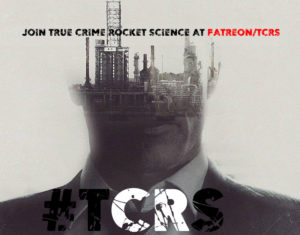The Netflix docuseries undermines the Portuguese cops at every turn, but then turns to the lead detective to second guess the cadaver dog evidence.



Although Amaral can be commended for his scenario of what happened, many of his insights and overall approach to the investigation seem to spot-on [far more so than the dubious efforts of British law enforcement over ten or more years], one serious weakness was Amaral’s attitude to the canine searches.
Understandably, the cops don’t like to be “told” what’s happening in an investigation, whether it’s the media yapping at them, the suspects, or worst of all [and most embarrassing of all] barking dogs.
In a few high-profile cases the cadaver dogs figured out the status of the victim months before law enforcement did. The “disappearance” of Laci Peterson and the Casey Anthony cases are infamous examples of cadaver dog alerts right in the beginning, and the Chris Watts case is [arguably] a current example.
It is patently ridiculous, in my view, for searches to continue into victims imagined to still be alive when multiple cadaver traces are linked to these victims, especially when the victims remain unaccountably absent for months and months, and in this case, twelve inexplicable years.
There is simply no getting around the fact that human cadaver odors and human cadaver traces are formed by human cadavers – dead people.
Clearly the Portuguese police in 2007 were familiar with sniffer dogs, in fact it’s obvious from media coverage at the time that the GNR had them on the scene virtually immediately.

But cadaver dogs are a very specialised, highly trained and expensive law enforcement resource. They’re an unusual tool typically deployed in the unusual circumstance where there’s no evidence of foul play, but simultaneously there’s a sinister aspect to an alleged disappearance.
When South Africa’s Danie Krugel departed Praia da Luz in July 2007 after conducting his own search, he left a “by the way” comment to the Portuguese authorities, suggesting they use cadaver dogs.
It was a suggestion the cops hadn’t considered since they were scraping the barrel in terms of dead-ends and bogus sighting, they took his suggestion seriously. As a testament to just how specialised these canine units were at the time, the Polícia Judiciária had to outsource the expertise to Martin Grimes, a well-regarded dog handler [and ex-cop] in Britain.
According to a blog posted on EddieandKeela in 2005:
Keela is hired out at £530 per day, plus expenses. If she worked every day of the year, she would earn almost £200,000 – about £70,000 more than her force’s chief constable.
Forces worldwide have expressed interest in her specialist training and Keela will be travelling to America in the new year to help the FBI with two murder inquiries. A South Yorkshire force spokeswoman said Keela – officially a crime scene investigation dog – has saved more then £200,000 nationally since April this year, helping with investigations in Ireland, Cornwall, Wiltshire, Surrey and the Thames Valley.
Of course as soon as the cops elect to bring in cadaver dogs, irrespective of whether they find anything or not, the whole focus of the investigation shifts. As soon as human remains are being searched for, the police search becomes far more serious, along with the potential allegations. The pendulum of justice swings from the relatively benign search for a missing person [who is alive] to the possibility of a homicide investigation.
The search for a living person wandering around [as occurred on May 3rd, and for the next three months] tends to be about line-of-sight and above-ground. Searching for a dead person is the opposite – it involves searching below ground, or for evidence that is invisible or extremely difficult to perceive or detect. Typically in less than straight-forward murder investigations where the victims remains are unaccounted for, other evidence including clothing, hairs and other traces are purposefully concealed, hidden, cleaned, destroyed, removed or manipulated in some way.







It’s interesting that when the dogs detected cadaver traces, the McCanns weren’t arrested on the spot. Surely if you’ve been making the case in public of an abduction, and evidence emerges that some other quite different scenario has occurred, one immediately has a case for obstruction of justice. Well, the Ramsey case is an example where even the discovery of the child dead in the family basement didn’t lead to the immediate arrest of any of the family members, and the parents were only questioned at length several months later.
The hesitation of the authorities may have had something to do with 1) the combination of the massive PR and political clout the McCanns had achieved by August 2007, but also 2) the lack of experience the Polícia Judiciária evidently had with cadaver dogs. If a cadaver dog alerted, did it really mean anything?
And obviously, this was the McCanns’ catchphrase, a carbon copy of the dismissive attitude successfully used by Casey Anthony’s suave defense lawyer Jose Baez on the exact same question.
https://youtu.be/kc84bVldT-4
In the above clip Gerry McCann’s response to the cadaver dog evidence is to call it “unreliable”, and yet in the garage test, no one told Eddie [or Grimes for that matter] which car belonged to the McCanns. Murat’s car and Sergey Malinka’s car were also checked, along with several others. The dogs only alerted on the outside and inside the McCann’s Renault Scenic.





Aside from the admissibility of the cadaver dog evidence, or whether it even constitutes evidence that could be or should be tested in court, I find the narrative around the introduction of the cadaver dogs the most fascinating.
In chapter 14 of Amaral’s book, he spends some time interrogating the confluence of unusual events leading to the use of cadaver dogs. Kate McCann also refers to having a dream about Madeleine in her book in late July. But this “turning point” was only reported in the media in 2010, seven long years after the fact, and only because it emerged in a court action initiated by the McCanns to force Amaral into remaining silent on these damning allegations.
Madeleine McCann: mother’s dream was ‘turning point’ in investigation, court hears – Telegraph
As I pointed out in DOUBT, it was a curious thing that Kate’s dream [implying for the first time that Madeleine was dead] coincided with Gerry’s trip to the USA in late July, and followed shortly on Krugel’s visit in mid-July.

Kate had dream of where to dig – The Sun
“She gave me the impression she thought Madeleine was dead.” The area was searched unsuccessfully with sniffer dogs. As well as the hillside, they are believed to be concentrating on a road that had been under repair near the McCanns’ Ocean Club apartment, on wasteland to the south, and on land at a beach to the east.
Madeleine has gone… We’ve let her down, Kate McCann cried – The Express
McCanns call in own forensic team to fight DNA linking them to Madeleine – Evening Standard
But a source at the FSS told the Evening Standard: “There is no reason to change the direction of the investigation and everything that has emerged indicates that it is focusing where it should. This is a very complex case and forensics are rarely conclusive on their own, but the new material adds to the existing picture that has been built up by police and fills in a few more pieces of the jigsaw.”
The source is said to have claimed that the samples were of sufficient quality to distinguish between Madeleine’s DNA and that of her twin siblings Sean and Amelie or her parents. It was conceded however that the quality of the DNA samples taken by British officers was not as good as it would have been if the Portuguese had collected it earlier.
The McCanns’ supporters insist…it was their own efforts to kick start the investigation that led to them being named as suspects. The
sniffercadaver dogs said to have picked up the scent of a corpse on Mrs McCann were only brought in after the couple gave the go ahead for retired South African police officer Daniel Krugel – dubbed the Locator – to conduct a search.He uses a secret scientific method to find murder victims by following their DNA trail with the help of global positioning satellites. A family friend said: “The irony for Kate and Gerry is that through them trying to move the case forward and be proactive it’s actually led to them being made suspects.
Don’t trust the bodyfinder – The Mirror
It is thought the McCanns initially welcomed Krugel’s help – but have since changed their minds. A source close to Kate and Gerry, who gave Krugel a strand of Madeleine’s hair after he flew to Portugal in July, said they are unconvinced by his claims and are keeping him “at arm’s length”.
Krugel, 42, contacted the family offering assistance two days after Madeleine disappeared on May 3. In July Gerry allegedly rang him back to accept his offer after receiving a string of emails urging the family to use the South African. Krugel has told the Mirror his machine quickly traced Madeleine. He said: “I went to Praia da Luz in the middle of July and did the tests on Madeleine. “I stayed there for four days, working at night time and all the data was the same. She was there in an area within walking distance of Praia da Luz but it is a very difficult area, with few houses. In my opinion the chances of her being alive are very, very slim.”
He said he gave the McCanns and police a map and an aerial photo of an 800-metre area they must search. Krugel reportedly also first suggested that
sniffercadaver dogs be bought in to search the McCann’s apartment. It was thesniffercadaver dogs discovery of forensic evidence in the apartment that eventually led to Kate and Gerry, from Rothley, Leics, being officially designated as suspects in the case.
Note the screengrabs above are sourced from 3:08 in the Sky News documentary clip provided below.
It’s possible Krugel and the McCanns had a falling out of some sort, either because Krugel made the allegation that Madeleine was dead [and let’s face it, before anyone else did, bar none] or because they “held him at arm’s length” Krugel felt insulted at this treatment.
Much ado has been made of Krugels’ eccentric methods, with some justification of course, but as a result Krugel hasn’t been credited with pushing the McCann investigation where it really needed to go.
Ironically I had a brush with Krugel myself. In 2017, ironically just as I was completing my exhaustive research and a trilogy of books on the McCann case, I bumped into Krugel at the airport.
I recognized his trademark Inspector Clouseau moustache immediately. I was surprised by how tall he was, over six-foot. It was weird, and frankly disconcerting, to have worked as a virtual hermit for months on end, solely on the McCann case, and then literally the day I emerged from my cave to fly for a holiday [and freelance assignment] to Mauritius, lo and behold, I bumped into a character right out of the true crime case I’d been working on.

I was tempted to speak to him, but in the end elected not to. I noticed Krugel eyeballing me at one point, so either he’d already made me, or he’d cottoned on to me checking him out, and even snapping the odd photo of him while he was drinking coffee at one point.
Later, when we disembarked from the flight, an elderly woman tripped as she stepped off the bus, and Krugel sprinted over to help her. Despite his being a fairly senior fellow, more senior than me at any rate, he reacted instantly, coming to her aid before anyone else did, including me. That incident made an impression and made me wonder if I too had a view that was too cynical.
Krugel’s entry in the McCann narrative changed everything, and if anything, it’s regrettable that it didn’t change the story and the outcome more than it has.
Danie Krugel: ‘Maddie lies here’ – The Star
In DOUBT I make the case that wittingly or not, the area Krugel searched was a misdirection. The reason – I argue – that Madeleine’s remains weren’t found during the crucial month of July 2007 was because the search teams were all looking where they were told or directed to look [including by Kate McCann and her dream] – on the East side of Praia da Luz, the Rocha Negra side.
There’s plenty of reason to believe Madeleine’s remains were stowed on the other side, the west side of Praia da Luz, at least temporarily. And this side corresponds very closely to where the Smith sighting occurred.



















Recent Comments